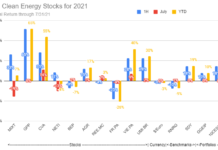by Debra Fiakas CFA
The corporate literature of Haydale Graphene Industries, Plc. (HAYD: AIM) says graphene material could ‘revolutionize the 21st century.’ Unfortunately, finding an economical way to produce graphene has had some wondering if we might have to wait until the 22nd century to finally gain the benefits of graphene’s numerous superior qualities of strength, flexibility and conductivity.
Based in the U.K., Haydale reported an eight-fold increase in sales of its graphene materials in the last six months of 2014. Granted revenue totaling GBP482,000 (USD$737,460) is still small, but the growth lends new credibility to Haydale’s proprietary plasma or ‘gas’ production process for graphene called the HDPLAS process. The company cites several advantages of HDPLAS, but ‘functionalization’ is a key to the economic viability. This is a process of adding new features or capabilities to the graphene material by changing the surface chemistry using plasma. This allows Haydale to produce many ‘types’ of graphene with different properties that might fit a specific application. Management has some confidence in its technology. The company recently took delivery of several new reactors for their plasma process to be used in both research and commercial production.
Haydale is targeting a number of markets, including inks, coatings, energy, electronics and consumer products. The company recently entered into a commercial agreement with the Welsh Center for Printing and Coating to develop and commercialize electronic inks. Haydale had already launched conductive graphene-based ink in Fall 2014, and has been sending samples to prospective customers.
Composite materials are also high on Haydale’s priority list. In November 2014, the company acquired EPL Composite Solutions Ltd., and recently entered into a pact with Alex Thomson Racing to develop graphene-based composites to build a racing boat. Haydale claims its addressable market in composits is GBP10 billion (USD$15.3 billion)
At the end of December 2014, Haydale had GBP4.0 million (USD$6.1 million) in cash on its balance sheet. The company has been using approximately GBP246,000 (USD$378,000) in cash per month to support operations. That suggests that Haydale can survive through the end of 2015, before it needs to raise additional cash. The company has 1.3 million options and warrants outstanding, which if exercised could bring in some additional capital. However, that would also mean about 12% dilution, a circumstance that is probably unavoidable for an early stage company like Haydale.
Some investors might note that Haydale is not alone in bringing graphene-based inks or composites to the market. However, it is notable that in both these markets precision and consistency are vital for the graphene materials. Haydale’s production process appears to be particularly well-suited to delivering a customized material to the customer. That makes Haydale a company well worth watching in the graphene world.
Debra Fiakas is the Managing Director of Crystal Equity Research, an alternative research resource on small capitalization companies in selected industries.
Neither the author of the Small Cap Strategist web log, Crystal Equity Research nor its affiliates have a beneficial interest in the companies mentioned herein.








